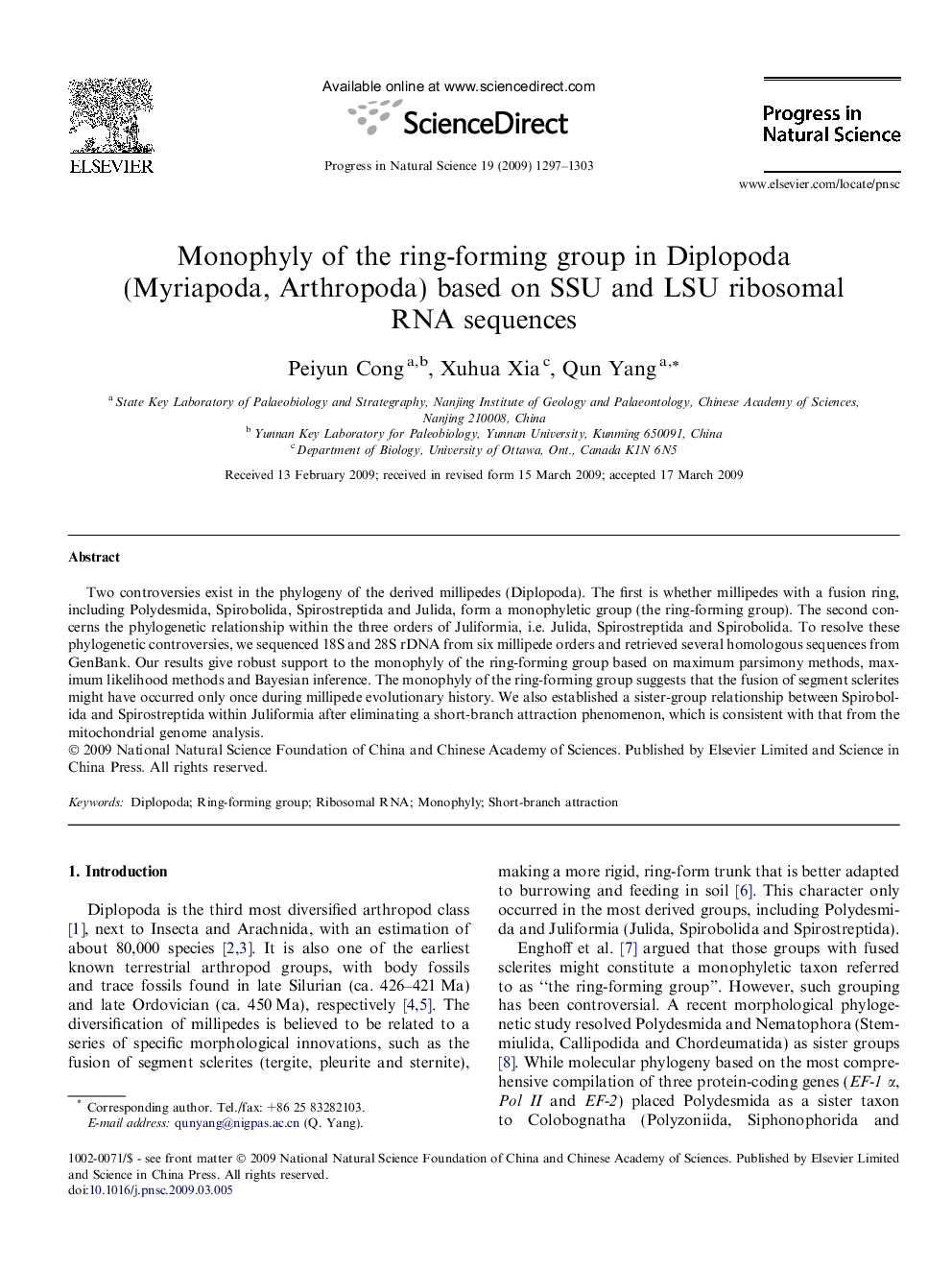| Article ID | Journal | Published Year | Pages | File Type |
|---|---|---|---|---|
| 1548391 | Progress in Natural Science: Materials International | 2009 | 7 Pages |
Two controversies exist in the phylogeny of the derived millipedes (Diplopoda). The first is whether millipedes with a fusion ring, including Polydesmida, Spirobolida, Spirostreptida and Julida, form a monophyletic group (the ring-forming group). The second concerns the phylogenetic relationship within the three orders of Juliformia, i.e. Julida, Spirostreptida and Spirobolida. To resolve these phylogenetic controversies, we sequenced 18S and 28S rDNA from six millipede orders and retrieved several homologous sequences from GenBank. Our results give robust support to the monophyly of the ring-forming group based on maximum parsimony methods, maximum likelihood methods and Bayesian inference. The monophyly of the ring-forming group suggests that the fusion of segment sclerites might have occurred only once during millipede evolutionary history. We also established a sister-group relationship between Spirobolida and Spirostreptida within Juliformia after eliminating a short-branch attraction phenomenon, which is consistent with that from the mitochondrial genome analysis.
